Salmon with Tarragon Vinaigrette
on Aug 08, 2017, Updated Aug 08, 2024
This post may contain affiliate links. Please read our disclosure policy.
Fancy enough for company, easy enough for a weeknight.
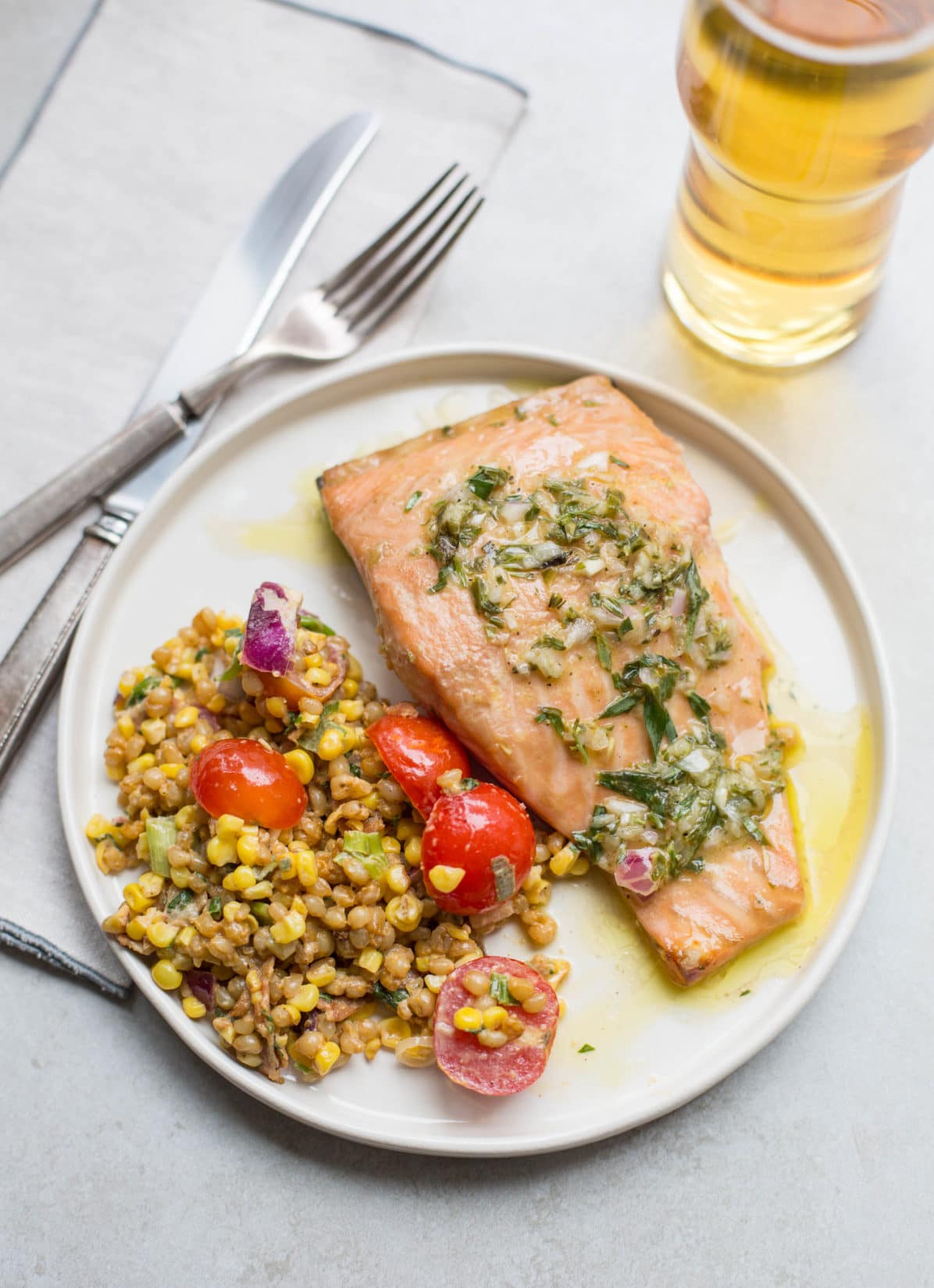
A good piece of fish needs very little to make it perfect. Here, the brisk, anisey-tangy flavor of the tarragon vinaigrette is a wonderful complement to the rich lushness of salmon filets. If you start with excellent salmon and super fresh herbs, and don’t overcook the fish, you cannot mess this up. A less is more dish.
Begin this meal with some Grilled Clams and Grilled Bread, and pair it with some fresh green beans and couscous for an easy and perfect seafood meal.
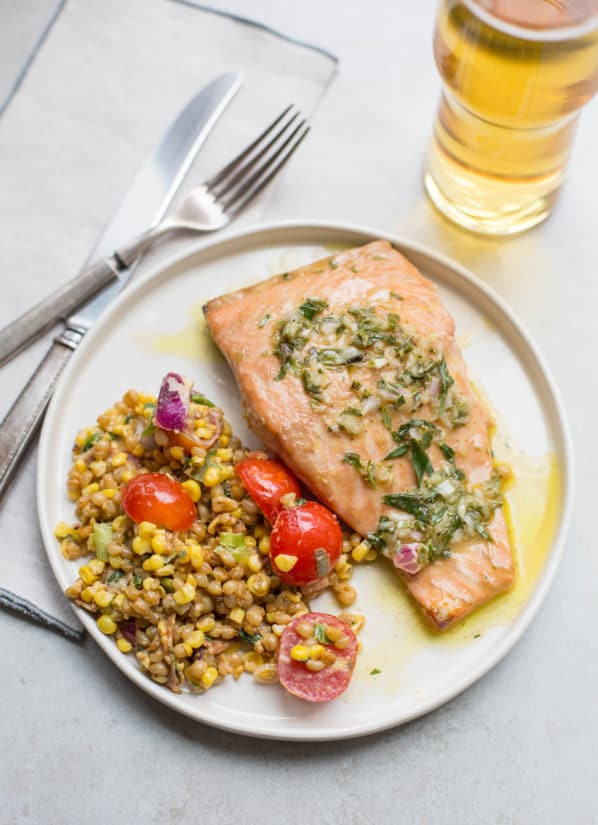
The mix of orange and lemon juices in the vinaigrette gives it a really nice balance of sweetness and tanginess. If you are in possession of a Meyer lemon, you could use that juice in place of the mix, and get to similar results Not exactly the same, that’s not the point, but something else wonderful.
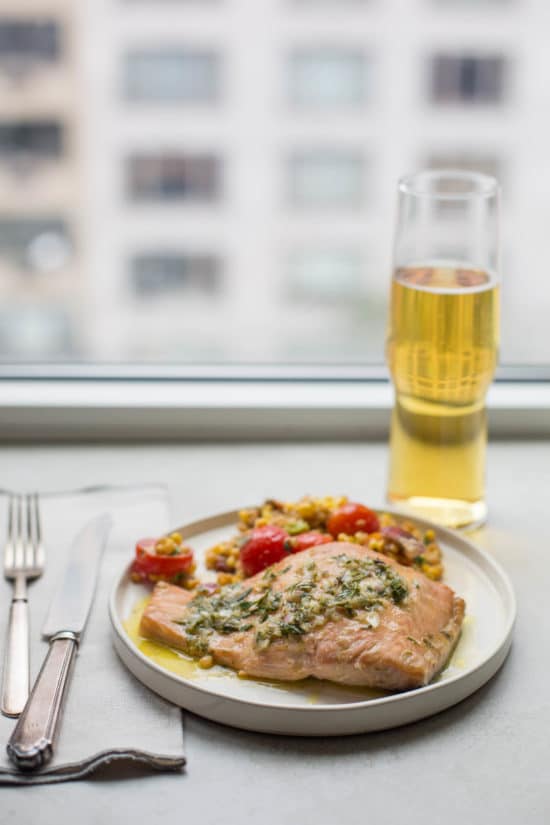
Tarragon Vinaigrette Salmon Ingredients
- Salmon – 4 6-ounce fillets of 1-inch thick salmon, preferably wild, skin on if desired
- Olive oil
- Orange and lemon juice – preferably fresh, and you can use lime instead of lemon juice
- Minced tarragon leaves – fresh is absolutely best here
- Shallots
- Dijon mustard
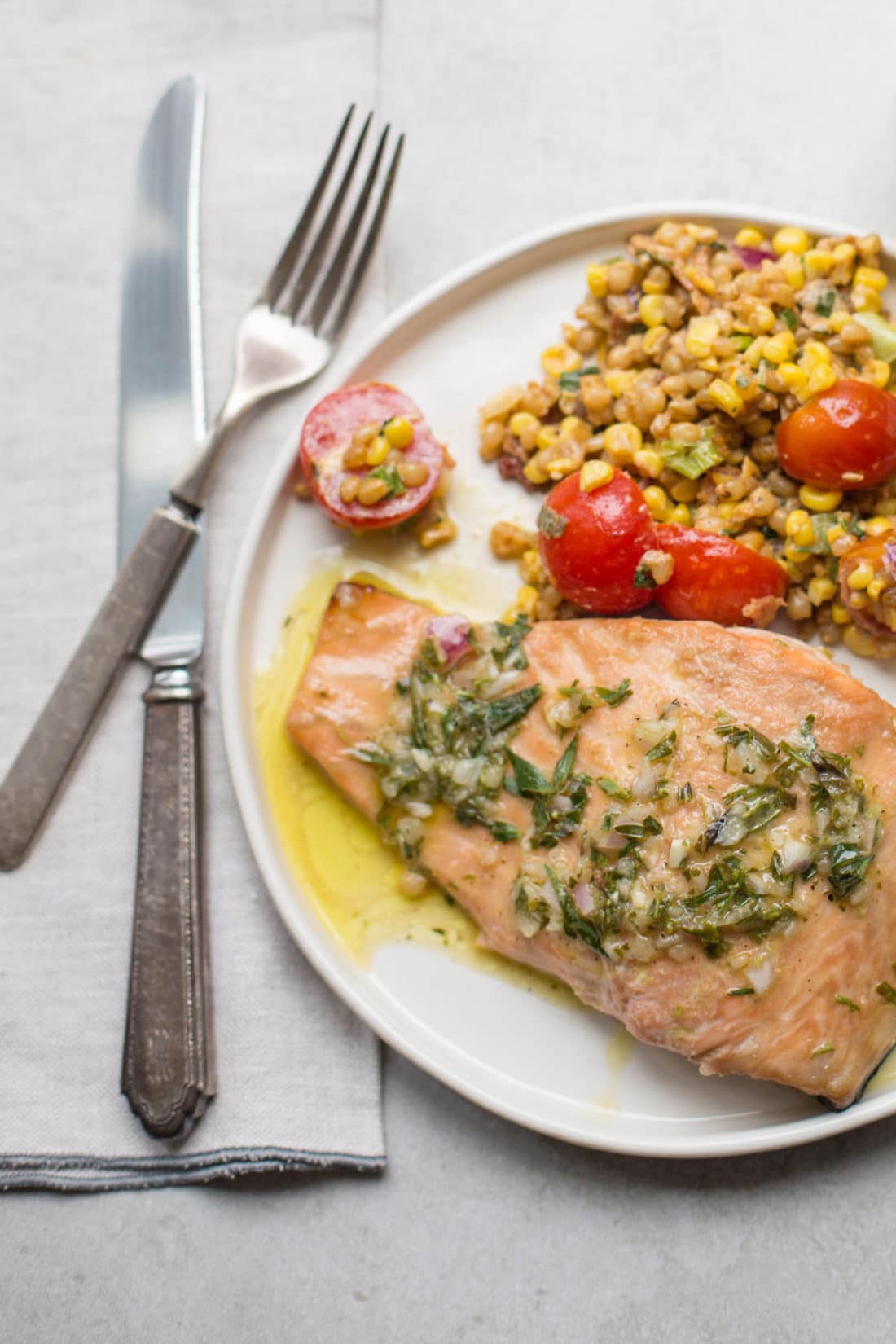
How to Make Salmon with Tarragon Vinaigrette
- Prepare for cooking. Preheat the oven to 425 degrees. Heat a heavy, ovenproof skillet over high heat, and add the olive oil.
- Prepare the salmon. Brush the salmon with olive oil, and season with salt and pepper. Add them to the pan skin side down (if relevant). Sear for about 3 minutes. Transfer to the oven and roast for 5 to 8 minutes, until done to your liking (check out this video, it’s so helpful).
- Make the vinaigrette. Meanwhile, combine the olive oil, orange juice, lemon juice, tarragon, shallots, Dijon mustard and salt and pepper.
- Serve. Stir or shake the vinaigrette to remix, then pour it over the fish. Serve hot or warm.
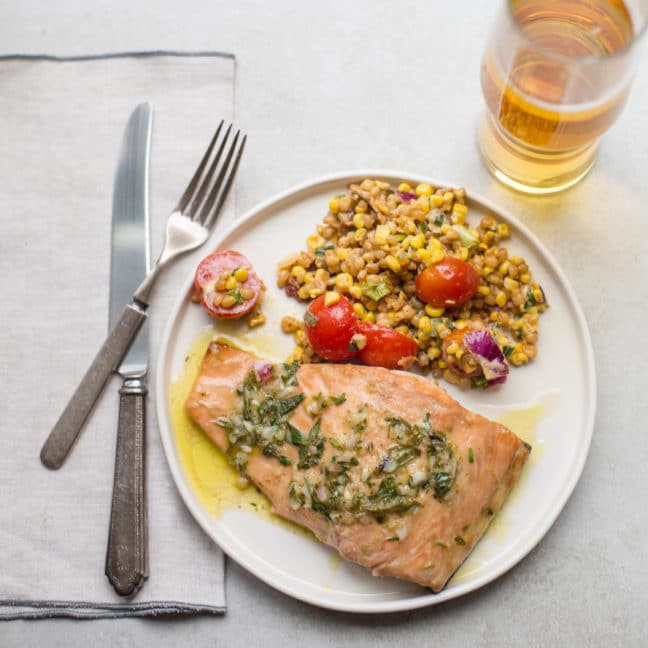
If you like your salmon cooked all the way through, that’s super fine, cook it how you like it. Having shared that, I think there is nothing finer than a piece of salmon with some dark pinkness inside.
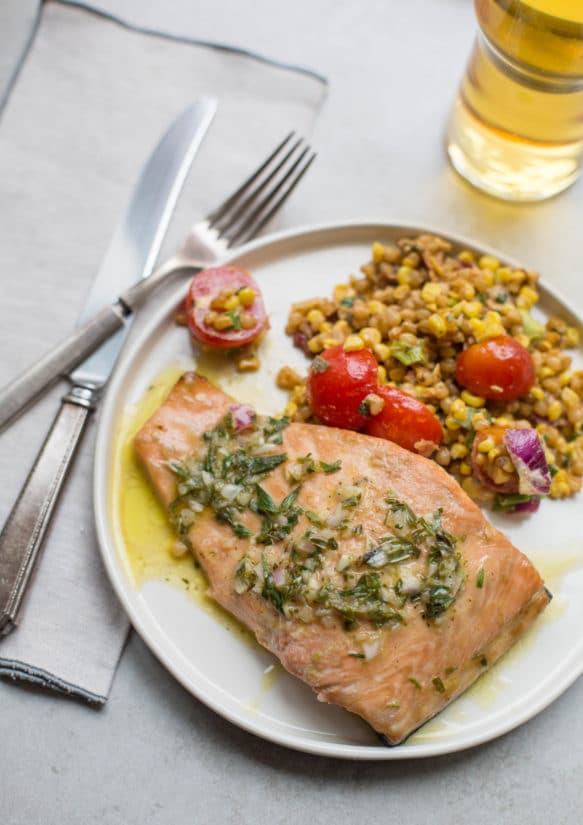
What to Serve with Salmon with Tarragon Vinaigrette:
This salmon would be a gorgeous, complete meal with this tomato and corn salad, mixed with some grains. It would also pair really nice with Sugar Snap Pea Salad or Air Fryer Green Beans.
File this one under FEFCEEFAW (Fancy Enough for Company, Easy Enough for a Weekday).
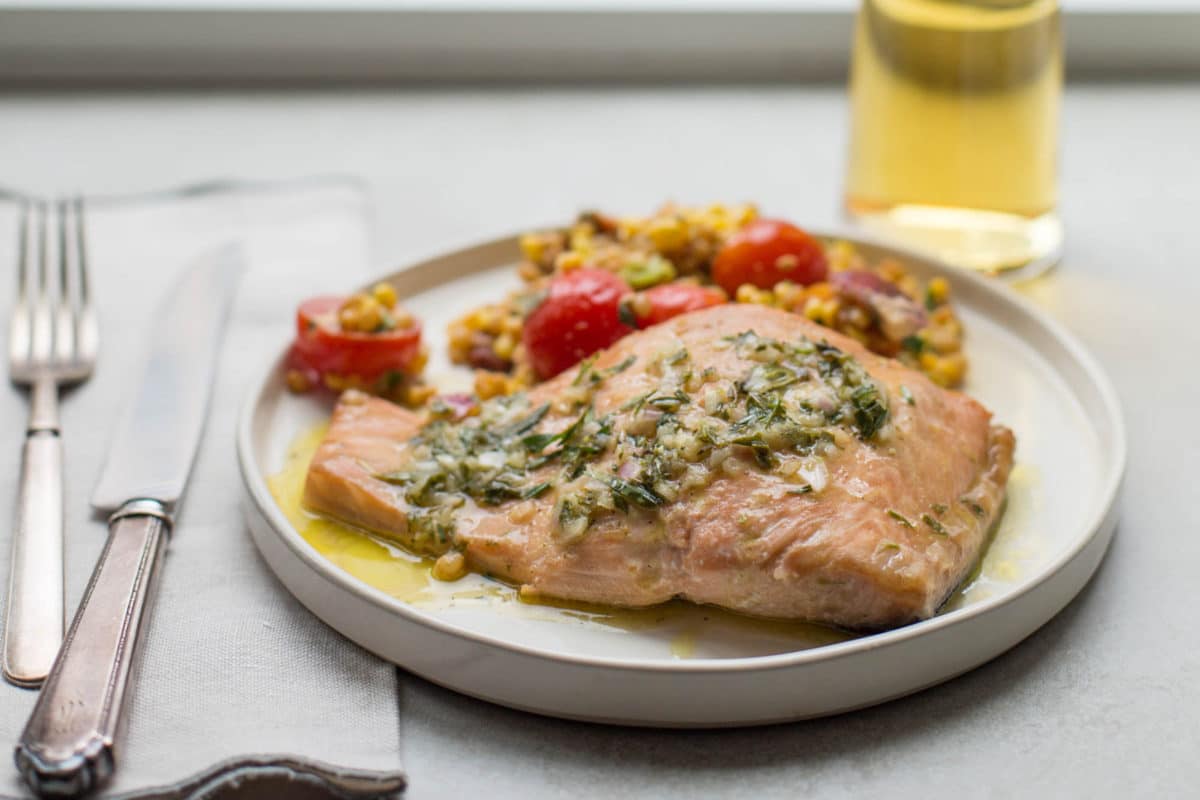
Other Weeknight Salmon Recipes:
- Salmon Panzanella
- Salmon with Polenta and Warm Tomato Vinaigrette
- Citrus Marinated Salmon with Zesty Sauce
- Grilled Salmon
- Orange Salmon with Leeks and Mushrooms
Plus even more salmon recipes here!
Pin this now to find it later
Pin It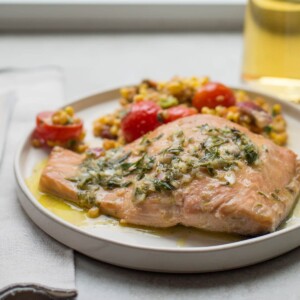
Salmon with Tarragon Vinaigrette
Ingredients
For the Salmon
- 4 6-ounce fillets of salmon, 1-inch thick preferably wild, skin on if desired
- 1 tablespoon olive oil plus more for brushing
For the Tarragon Vinaigrette
- ¼ cup extra virgin olive oil
- 2 tablespoons fresh orange juice
- 1 tablespoon fresh lemon juice
- 2 tablespoons minced fresh tarragon leaves
- 2 tablespoons minced shallots
- 1 teaspoon Dijon mustard
- Coarse or kosher salt and freshly ground pepper to taste
Instructions
- Preheat the oven to 425°F. Heat a heavy, ovenproof skillet over high heat, and add the olive oil.
- Brush some olive oil over each piece of salmon, and season with salt and pepper. Add them to the pan skin side down (if relevant). Allow to sear, without moving, in the pan for about 3 minutes. Transfer to the oven and roast for 5 to 8 minutes, until done to your liking (check out this video, it’s so helpful).
- While the salmon is cooking, in a small container combine the olive oil, orange juice, lemon juice, tarragon, shallots, Dijon mustard and salt and pepper. Shake to blend well.
- Transfer the fish to a serving platter or individual plates. Shake the vinaigrette to remix, then pour it over the fish. Serve hot or warm.
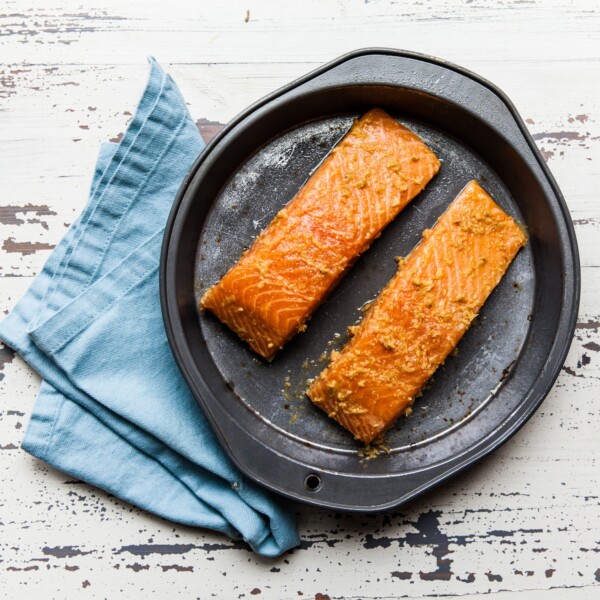
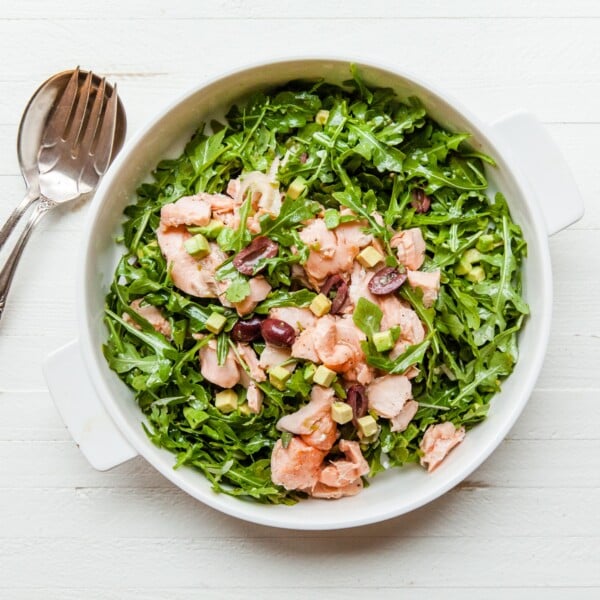
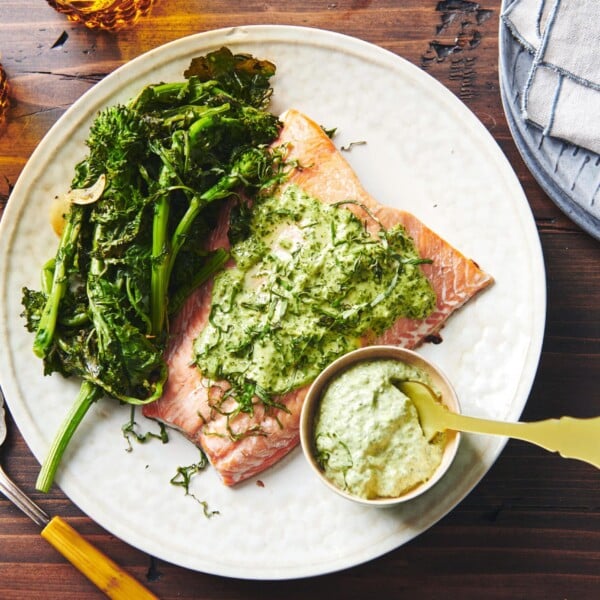
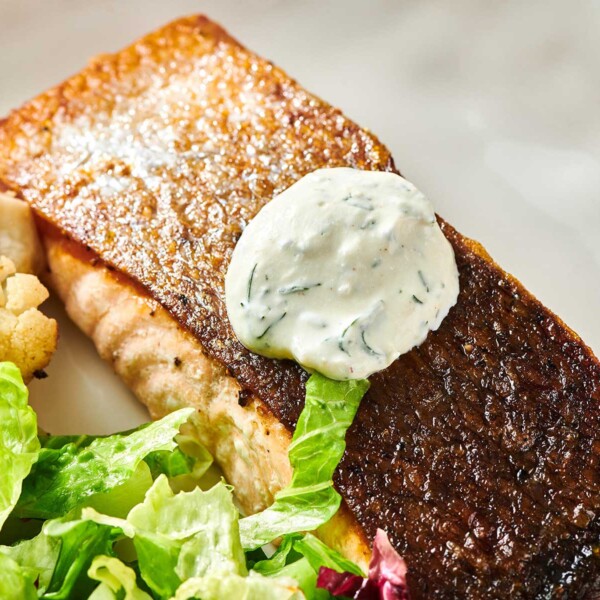









Use this vinaigrette for everything! Delicious!
The ratios are wrong. 2 T of shallots are absurd. I would cut that back by at least half and maybe more. I added a teaspoon of fresh dill. That was also nice.
I happen to like shallots, but you are of course welcome to adjust!
Sounds like a great recipe. But please tell us what type of vinegar works best and how much you used. I would use white wine vinegar and the 3:1 ratio for a vinaigrette which would be a little over a tablespoon. I think, me and ratios are not friends. Also, please rewrite the instructions for #3. This way everyone can enjoy the recipe!
so sorry for the confusion! there is no vinegar in the original recipe, just lemon and orange juice BUT you can sub in the white wine vinegar for the lemon juice – I would still keep the orange juice though, if possible, because the citrus is what makes this dressing special!